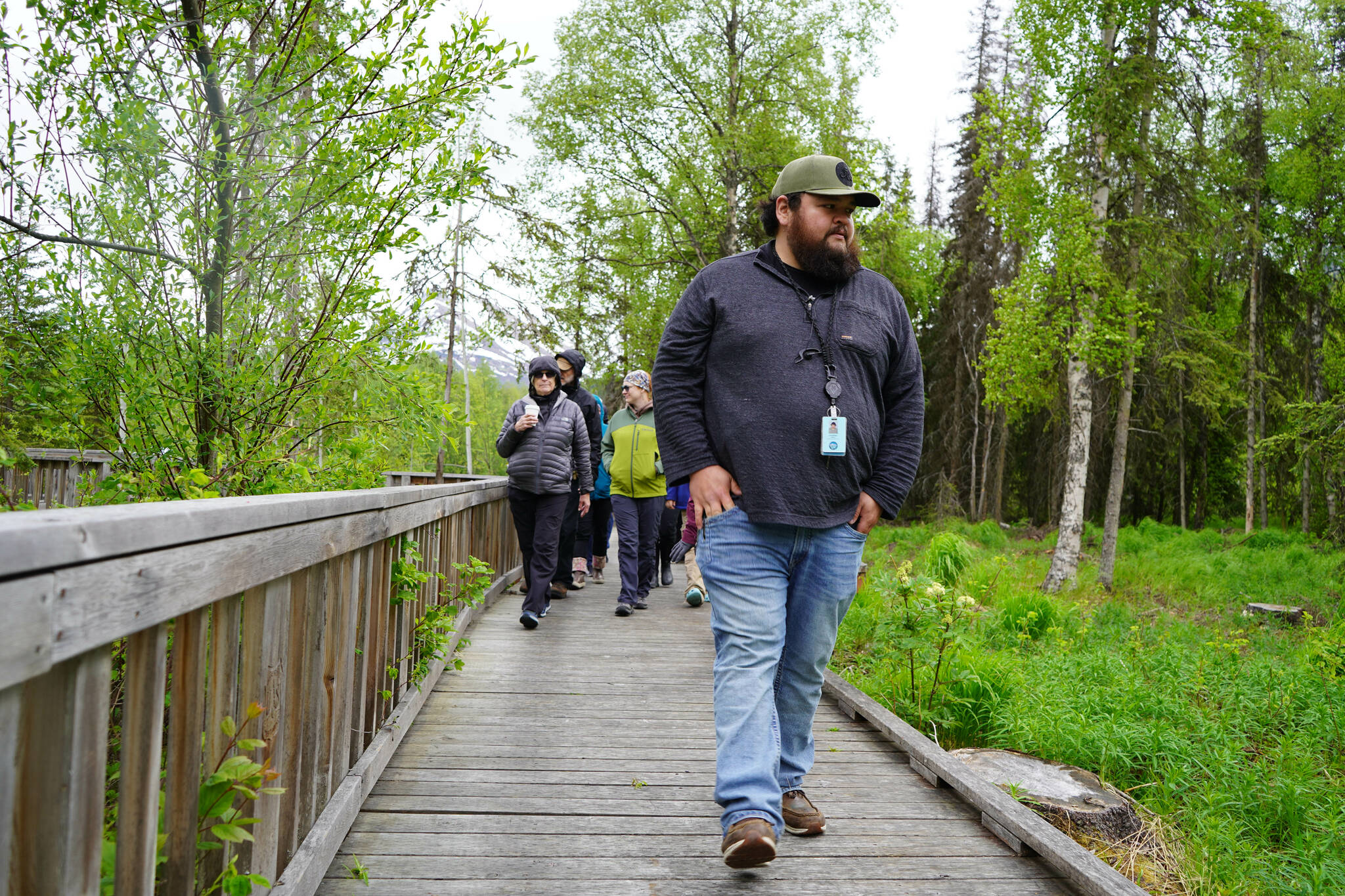Between the Swan Lake Fire, the COVID-19 pandemic and spruce bark beetle mitigation, multiple factors have kept the K’beq’ Cultural Heritage Interpretive Site near Cooper Landing closed since 2019. Roughly 200 gathered at the space on Friday to celebrate its reopening.
The site incudes a boardwalk that encircles a traditional house site, as well as a cabin constructed nearly a century ago by tribal members. Signage at the site explains that K’beq’ means “footprints” in Dena’ina, and the site offers a look at the traditions and culture of the Kenai Peninsula’s Indigenous people.
The site is operated by the Kenaitze Indian Tribe, and during its open hours — 10:30 a.m. to 3:30 p.m. Thursday through Monday until the end of September — free guided tours are available.
Culture and Stewardship Coordinator Jonathan Wilson leads tours and otherwise runs the site during the summer months. He said the site teaches people what cultural sites look like — house and cache pits can be found all over the Kenai Peninsula.
As part of the reopening ceremony, there was traditional drumming and dancing, remarks by Tribal Council Chair Bernadine Atchison and others, as well as other activities — including the chance to go on some of the first tours helmed by Wilson in the now reopened space.
As Wilson guided roughly a dozen attendees on Friday’s first tour, he shared stories, described traditional uses for local flora, and gave a tour of the structure that once stood at the site — now an indentation in the ground. He pointed out where a sauna would have been, where residents would have slept, and where they would have stored their supplies — in a cache pit separate from the home. People would have laid fish or meat, then a layer of moss and birch bark, all the way to the top. Logs would cover the pit to keep a predator from getting in — though if a predator got so close to the house, Wilson said they’d be more likely to become part of the pit than to take from it.
Wilson also described the way people would have learned from the animals in the area, like storing food for the winter in the same way a squirrel creates a stockpile.
“The Dena’ina people call this place Yaghanen,” Wilson said toward the end of the tour. “Yaghanen translates to ‘the good land.’”
His tour of the site concluded at a scale model of the home that once filled it. The model was constructed decades ago by students of Tustumena Elementary School, Wilson said, lightly refurbished and maintained over that time.
Michael Bernard, cultural resource supervisor for the tribe, said the centerpiece of the site is a house foundation last used around 500 years ago. Another major feature is a cabin constructed by Kenaitze tribal members in the 1930s.
“It’s important to understand that this is ancestral lands of Kenaitze people,” he said. “They’re still here, and thriving. They want to share this beautiful place with everybody and get their help in protecting the resources.”
Reopening the site and hosting so many people is testament, Bernard said, to just how long the reopening has been coming. The K’beq’ site is operated by the tribe, but represents a greater relationship and partnership between the tribe and a variety of other agencies, including the U.S. Fish and Wildlife Service, the U.S. Forest Service, State Parks, and the Kenai Mountains-Turnagain Arm National Heritage Area.
“To see everybody here really solidifies to me that we have a lot of support, and people who care,” he said.
For more information about the K’beq’ Cultural Heritage Interpretive Site, find “Kenaitze Indian Tribe” on Facebook or visit kenaitze.org.
Reach reporter Jake Dye at jacob.dye@peninsulaclarion.com.

